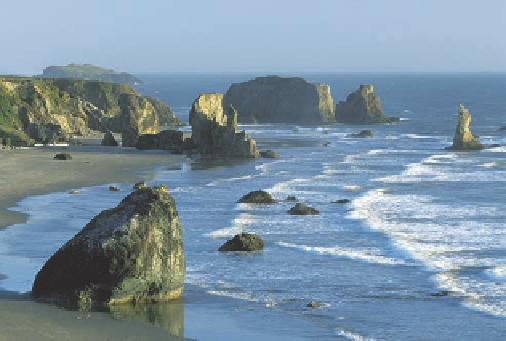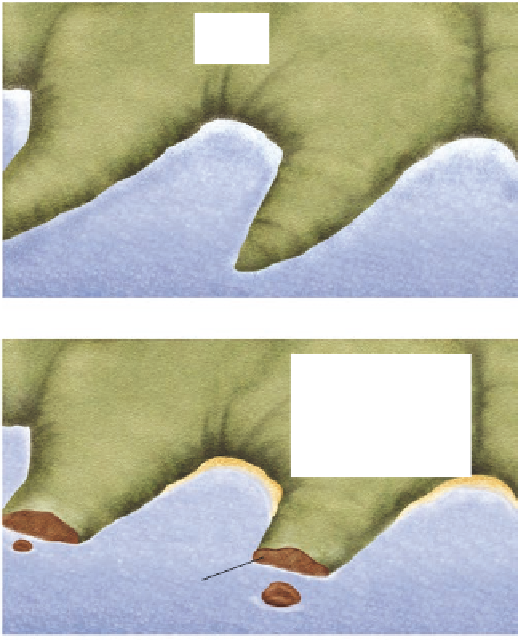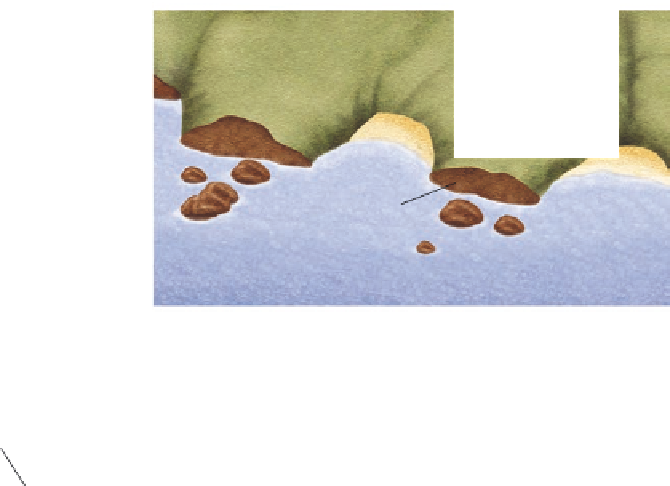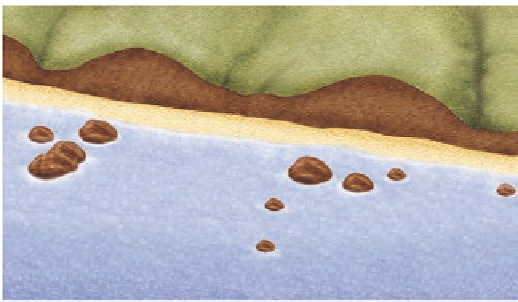Geoscience Reference
In-Depth Information
Land
Bay fills in
as deposits
continue
Bay
Bluff retreats
as erosion
continues
Sea
stacks
Sea
Headland
Beach forms
by deposition
Straight
cliff
retreats
New
beach
Bluff forms from
wave erosion
Figure 19.20 Evolution of a rocky coastline
Through the combined processes of erosion and deposition over time, rocky coastlines
evolve in a predictable way that wears down headlands to form relatively straight beaches.
time and additional erosion, the top of the arch may collapse,
leaving a detached fragment of the original bluff, called a
sea
stack
, isolated in the ocean. These features are particularly
common along the rocky coast of the Pacific Northwest. The
net effect of shoreline retrogradation in places like this is
that the coastline slowly transforms from one that has a num-
ber of prominent headlands to one that is relatively straight
(Figure 19.20).
KEY CONCEPTS TO REMEMBER ABOUT
EROSIONAL COASTLINES
1.
A coastline that is essentially retreating through erosion
is considered to be retrograding.
2.
Erosional coastlines are shaped primarily by strong
waves. These coastlines tend to be rocky with high bluffs.
VISUAL CONCEPT CHECK
19.2
Imagine that you are driving down the Pa-
cific Coast in Oregon and see the beautiful
landscape pictured here. What conclusions
can you reach about the history of land-
scape evolution at this location? What were
the processes involved? In short, how did
this landscape form?















